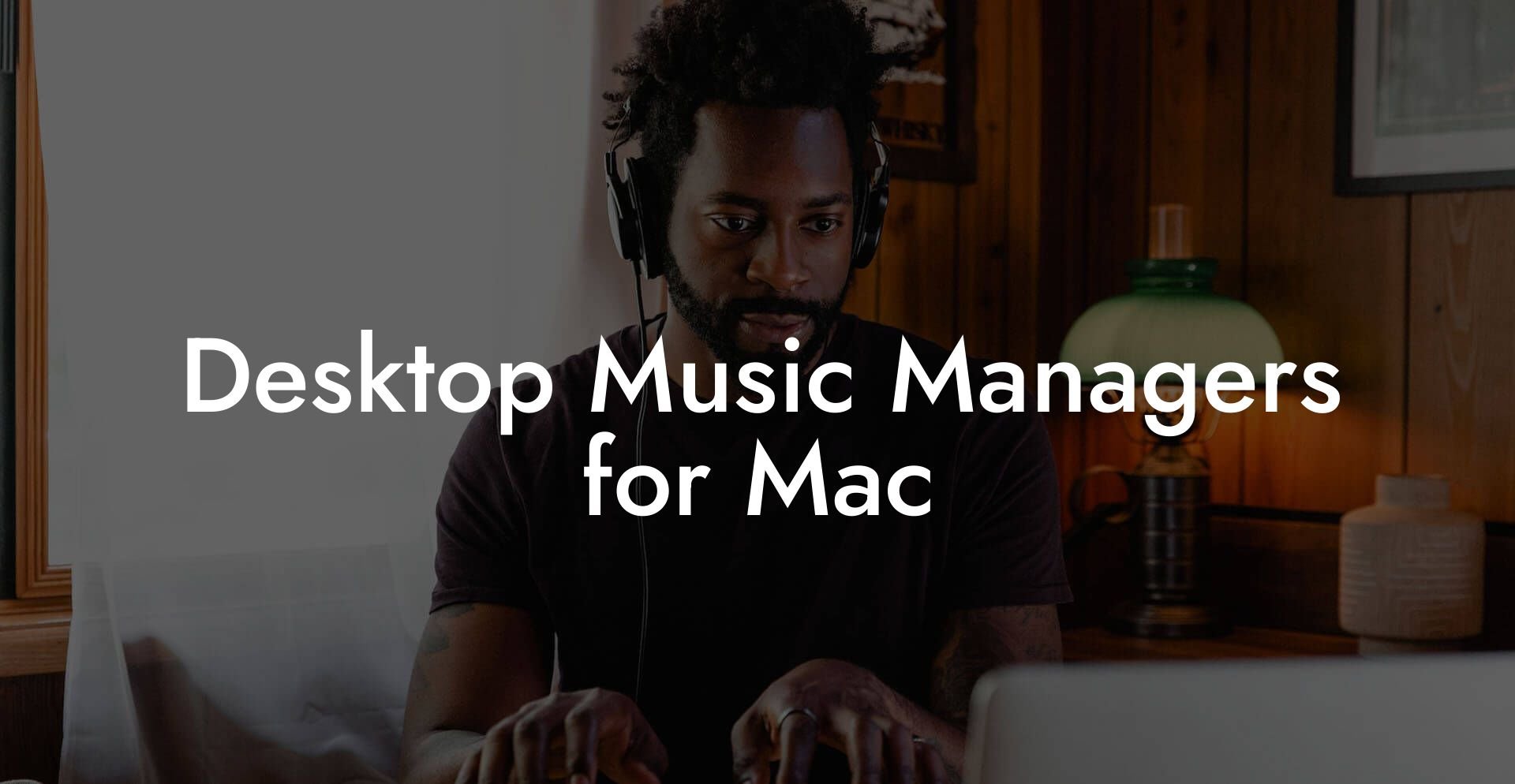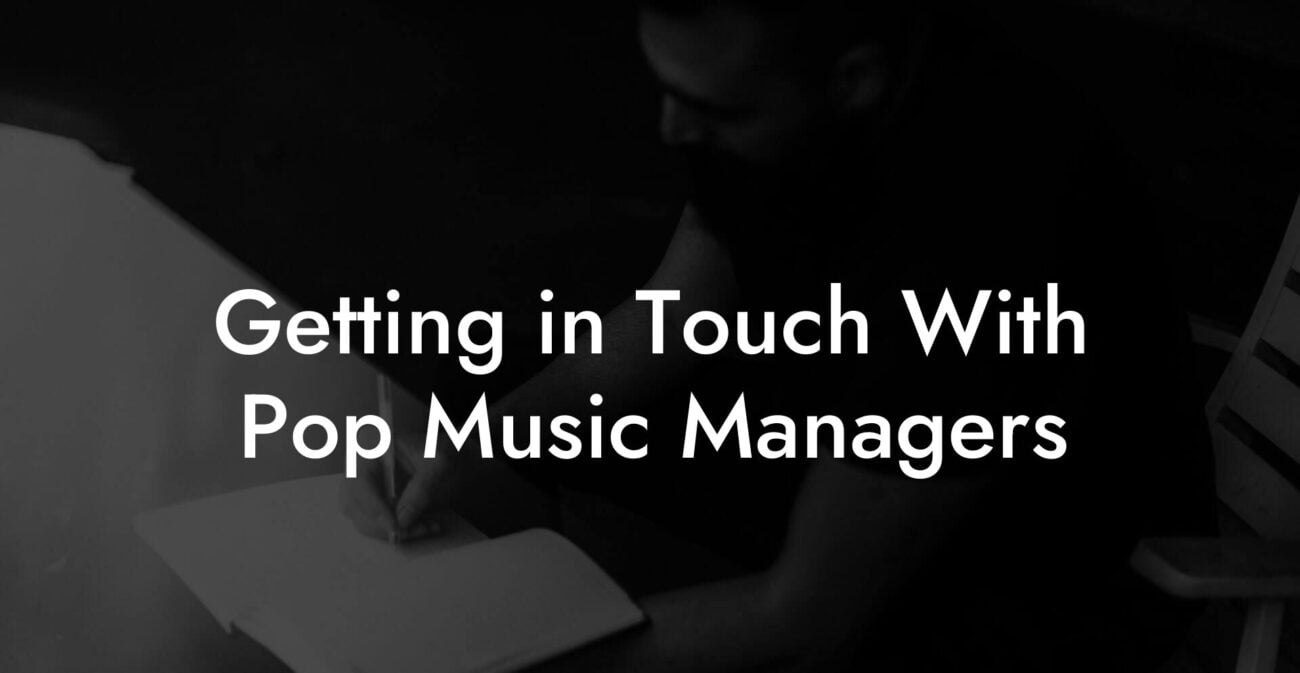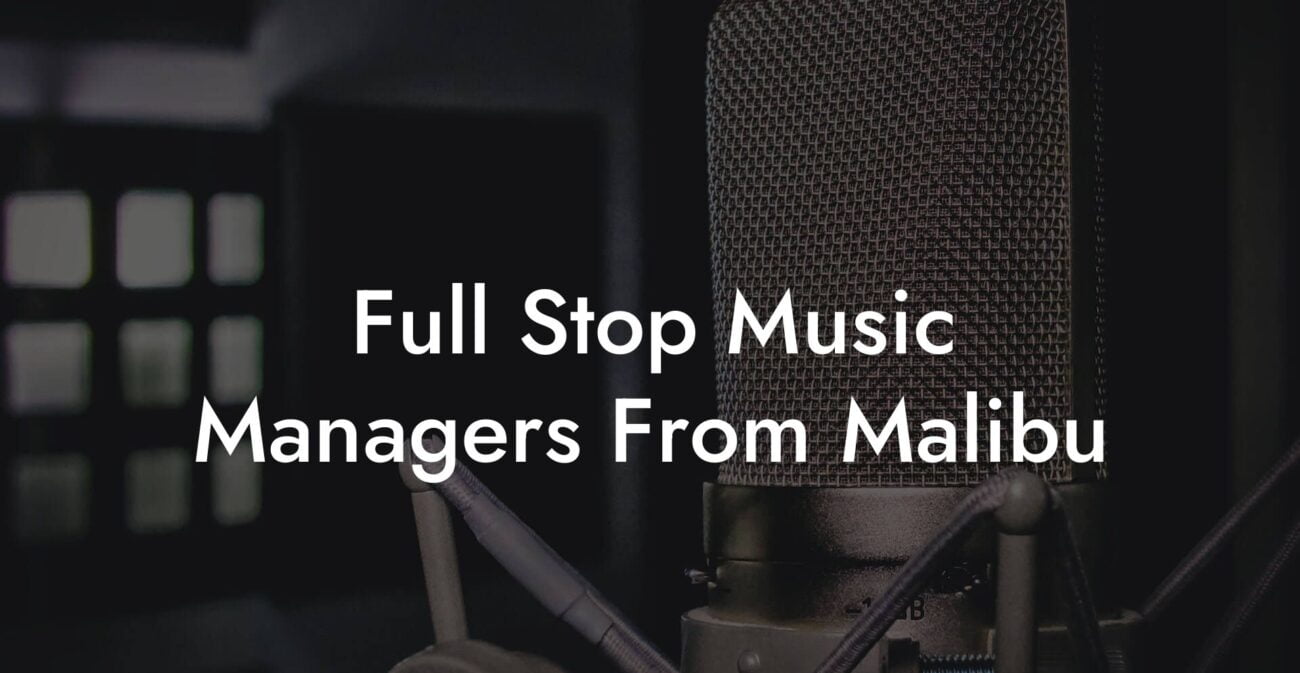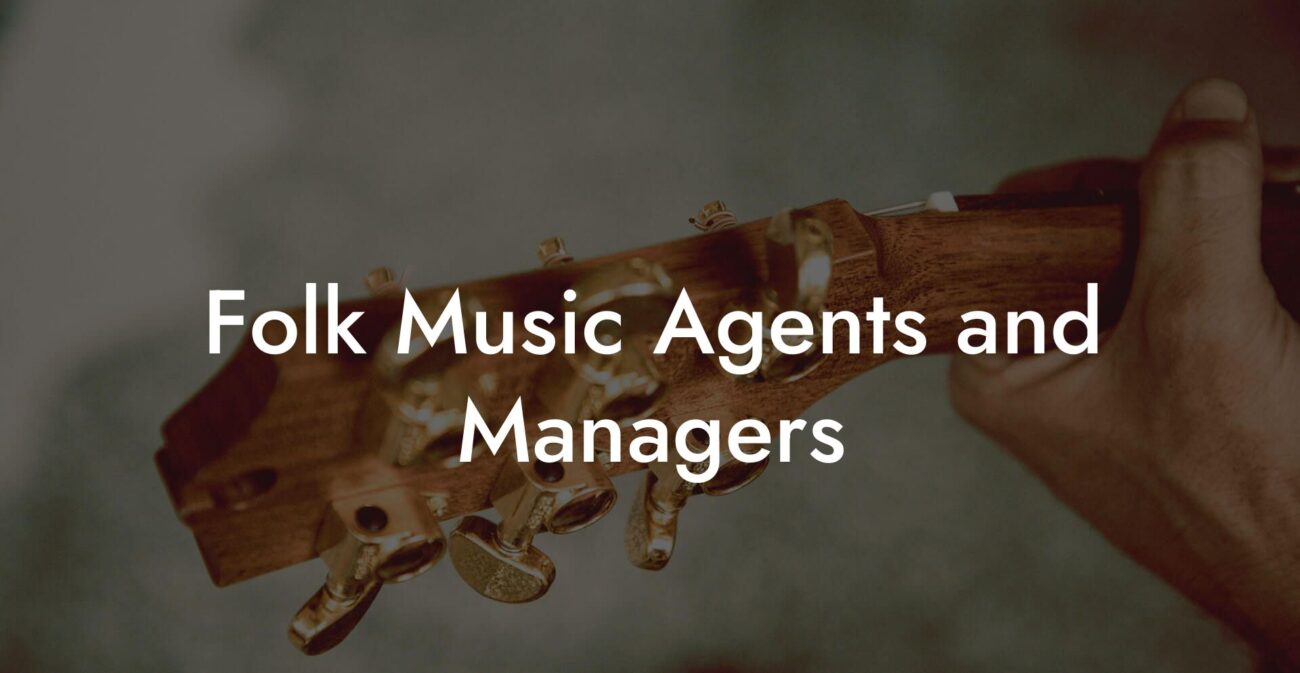Songwriting Advice
Desktop Music Managers for Mac

Picture this: you’re sitting at your sleek Mac, fingers poised above the keyboard, ready to turn your latest burst of creativity into a chart-topping anthem. But wait, before you dive headfirst into songwriting bliss with Lyric Assistant by your side, there’s one unsung hero that every modern musician swears by: a desktop music manager for Mac. It’s that secret sauce that takes your sprawling music collection from chaotic pile-up to a perfectly organized digital symphony. Whether you’re a budding songwriter trying to keep track of your endless demos or a seasoned musician curating an epic library for your next big hit, this guide is here to help you navigate the wild world of desktop music management with humor, flair, and a healthy dose of tech-savvy wisdom.
Quick Interruption: Ever wondered how huge artists end up fighting for their own songs? The answer is in the fine print. Learn the lines that protect you. Own your masters. Keep royalties. Keep playing shows without moving back in with Mom. Find out more →
Quick Interruption: Ever wondered how huge artists end up fighting for their own songs? The answer is in the fine print. Learn the lines that protect you. Own your masters. Keep royalties. Keep playing shows without moving back in with Mom. Find out more →
Quick Links to Useful Sections
- What Are Desktop Music Managers for Mac?
- Key Features of Desktop Music Managers on Mac
- Why Desktop Music Managers Are Essential for Music Makers
- How to Choose the Right Desktop Music Manager for Your Mac
- Assess Your Needs
- Check Compatibility and User Experience
- Look for Integration Capabilities
- Evaluate Customization Options
- Read Reviews and Test Demos
- Integrating Desktop Music Managers with Your Songwriting Process
- Popular Desktop Music Managers for Mac: Tools and Reviews
- Swinsian
- iTunes (Legacy)/Apple Music
- Vox
- Clementine
- Desktop Music Manager Use Cases: For the Modern Musician
- Case Study: Organizing a Growing Demo Library
- Case Study: Streamlining Collaborative Projects
- Case Study: Achieving Musical Zen with Smart Playlists
- Creating a Seamless Workflow: Combining Desktop Music Management and Lyric Writing
- Resources and Community Support: Your Next Steps
- Personalizing Your Music Management Strategy on Mac
- Frequently Asked Questions About Desktop Music Managers for Mac
- Your Journey to a Harmonious Music Management Experience
What Are Desktop Music Managers for Mac?
At its core, a desktop music manager is a software solution designed to help you organize, curate, and enjoy your digital music library with ease. For Mac users, these managers are specifically optimized to blend seamlessly with macOS, ensuring that your tunes, samples, and song ideas are just a click away, no matter how massive your collection becomes.
Think of them as your virtual music concierge: they tidy up your audio files, providing metadata organization, smart playlists, and even integration with cloud services for backup and synchronization. Gone are the days of hunting for that lost demo in a labyrinth of folders, desktop music managers transform chaos into harmony, making your creative process as smooth as your favorite melody.
And let’s be honest, in an age where everything moves at the speed of your latest viral TikTok, having an organized music library isn’t just a luxury, it’s an absolute necessity for any musician who values efficiency, creativity, and that sweet, sweet workflow.
Key Features of Desktop Music Managers on Mac
To understand why desktop music managers are an indispensable tool for modern musicians, let’s break down some of their key features that make them a total game changer:
- Library Organization: These tools automatically sort your music by genre, artist, album, and more, using smart metadata tagging. No more manual renaming or reordering, let your software do the heavy lifting.
- Playlist Management: Create playlists that suit every vibe and mood, from your early morning acoustic sessions to your late-night EDM bangers. Advanced filtering and smart playlists help you seamlessly blend your old favorites with new discoveries.
- File Conversion and Compatibility: Effortlessly convert file formats to ensure compatibility across all your devices. Whether you’re working with high-quality WAV files or streaming compressed MP3s, your desktop music manager keeps everything in sync.
- Advanced Search Capabilities: A robust search function helps you locate tracks, lyrics, and even specific samples within your library in seconds. Just type in a keyword or phrase, and let the magic happen.
- Integration with Music Production Tools: Many music managers play nicely with your digital audio workstation (DAW), letting you drag and drop files directly into your projects. And if you’re using Lyric Assistant for that perfect verse, managing your inspirations becomes a breeze.
- Customization and Themes: Tailor the look and feel of your manager to match your personal style. Whether you’re into vintage vinyl vibes or futuristic neon aesthetics, there’s a customization option for every taste.
- Cloud Sync and Backup: Never lose your precious tracks again with cloud integration. Your music library is synced across devices, giving you peace of mind on the go.
These features collectively ensure that every note, riff, and lyric is right where you need it, organized, accessible, and ready to inspire your next creative masterpiece.
Why Desktop Music Managers Are Essential for Music Makers
Let’s get real: in the bustling digital age, your music library is more than just a collection of files, it’s a vibrant archive of your creative soul. Whether you’re a bedroom songwriter or an independent artist gearing up for your debut album, keeping your music and inspiration in order is crucial.
Imagine this scenario: you’ve been crafting the perfect chorus for weeks, and suddenly, you remember you recorded a groundbreaking riff that perfectly complements it. Without a desktop music manager, you might juggle countless folders, “Riffs 1,” “Riffs_final,” “Master Copy Riff”, until you lose track of which is the one you need. With an organized system in place, you’d instantly pinpoint the exact file, saving time and sparing you a mini heart attack.
For music makers, time is money, creativity is currency, and productivity is the ultimate hit. Desktop music managers not only streamline your workflow but also free up your mental bandwidth so you can do what you do best: create music that resonates, inspires, and rocks the world.
How to Choose the Right Desktop Music Manager for Your Mac
With an overwhelming number of desktop music managers available, finding the perfect fit might seem like a quest worthy of an epic ballad. But fret not, here’s your roadmap to picking a music manager that suits your style, needs, and Mac's operating system.
Assess Your Needs
First, consider what you really need from a desktop music manager. Are you looking for robust file organization, powerful search capabilities, or seamless integration with your DAW and lyric writing tools? List out your priorities. Perhaps you’re a meticulous organizer who loves tidiness and efficiency, or maybe you’re more about creative spontaneity and need a manager that’s flexible enough to keep up with your ever-changing playlist.
Check Compatibility and User Experience
Your Mac is unique, its sleek design and optimized performance deserve a software partner that won’t slow things down. Look for managers that are specifically built or optimized for macOS. User interface and intuitiveness are key. After all, if your music manager looks like it was designed in the early 2000s, you might find yourself cursing under your breath more than needed.
Look for Integration Capabilities
In today’s interconnected landscape, your desktop music manager should effortlessly integrate with other tools you use, such as digital audio workstations, streaming services, and, of course, lyric writing aides like Lyric Assistant. Compatibility with cloud services and other platforms (like iOS or even Android if you switch devices) is another plus, ensuring you’re always in tune, no matter where you are.
Evaluate Customization Options
Musicians are as diverse as their genres. Some of you might love tweaking every little setting to create a truly personal environment, while others prefer a plug-and-play solution. Look for a desktop music manager that offers themes, layout adjustments, and flexible organizational structures so you can adapt it to your creative process.
Read Reviews and Test Demos
Don’t just take a vendor’s word for it. Check out online reviews, read community forums, and if possible, test out demos. Platforms like Reddit, YouTube, and music production blogs often have in-depth reviews that highlight both the strengths and quirks of various managers. Remember, what works for one musician might not work for another.
Integrating Desktop Music Managers with Your Songwriting Process
Here’s where the magic really happens: combining an efficient desktop music manager with your songwriting process creates a workflow that’s nothing short of enchanting. Imagine the fluidity when your ideas, riffs, and lyric files are neatly sorted and instantly accessible, making inspiration strike at any moment.
A robust music manager not only keeps track of your audio files but can also be used to store and organize lyric drafts, project notes, and even recordings of your spontaneous jam sessions. For instance, if you’re using Lyric Assistant to generate clever rhymes or spark ideas for a new verse, you can effortlessly integrate those creative snippets into your overall music library for future reference.
Many modern music managers feature smart tagging and metadata editing, letting you attach keywords, genres, moods, or even production notes to each track. With a few clicks, you can quickly compile a playlist of “chill, introspective tracks” for those reflective midnight sessions or a “high-energy beats” collection to get the party started. This kind of organization not only fuels creativity but also minimizes the time spent digging through files, time you can redirect into crafting your next hit.
And let’s not forget the integration with your other creative software. Modern desktop music managers are designed to work hand-in-hand with your digital studio setup, ensuring that your workflow, from lyric brainstorming with Lyric Assistant to final track arrangements, is as seamless as sliding into your favorite pair of headphones.
Popular Desktop Music Managers for Mac: Tools and Reviews
The market is brimming with options when it comes to desktop music managers for Mac, each boasting a unique set of features that cater to different music-making philosophies. Let’s take a closer look at a few crowd favorites and see what they bring to the (mix) table:
Swinsian
Swinsian is renowned for its simplicity and power. With a minimalist interface that doesn’t sacrifice functionality, it’s perfect for users who want maximum control over their library without getting bogged down by unnecessary bells and whistles. Its advanced metadata management and smart playlist features make organizing even the largest collections a breeze.
Users rave about its speed and ease of use, ideal for busy songwriters who need to access their inspirations on the fly. Whether you’re looking to add custom tags or export your library for backup, Swinsian offers a polished experience that fits perfectly with a modern, minimalist Mac aesthetic.
iTunes (Legacy)/Apple Music
While iTunes (now morphed into Apple Music) has long been a staple for many Mac users, it still retains a loyal following. Its deep integration with macOS, along with seamless syncing across your Apple ecosystem, makes it a convenient choice for many musicians. However, its interface can feel a bit dated to those used to more modern, streamlined apps.
Despite that, its robust library management and the ability to integrate with other Apple services continue to make it a contender, especially for users who have invested heavily in the Apple ecosystem.
Vox
Vox is another contender that offers a sleek and user-friendly interface, designed specifically for audiophiles and music enthusiasts. Its high-fidelity playback and intuitive categorization features set it apart as a premium choice for those who appreciate quality sound alongside top-notch organization. Vox also supports various file types and integrates well with cloud services, making it an excellent choice for the modern, mobile musician.
Clementine
A tribute to classic music players with a modern twist, Clementine offers a versatile platform for managing your digital audio. Featuring smart playlists, cloud storage integration, and support for a variety of audio formats, it’s a fantastic option if you need a cross-platform solution that works seamlessly on your Mac while also syncing with other operating systems.
Other notable mentions include tools like Roon and JRiver Media Center, each with their unique strengths in sound quality and media management. When considering the right tool for your creative process, be sure to explore demos, read user feedback, and even trial a couple of these managers to see which one resonates with your vibe.
Desktop Music Manager Use Cases: For the Modern Musician
So, how exactly do desktop music managers elevate your journey as a musician? Let’s break down some real-life scenarios where these tools can make a massive difference:
Case Study: Organizing a Growing Demo Library
Meet Alex, an independent songwriter whose demo folder was once a jumbled mess of incomplete tracks, half-forgotten ideas, and random voice memos. Alex decided enough was enough and opted for a desktop music manager designed for Mac. With smart tagging and metadata editing at his fingertips, he transformed his chaos into a well-organized library categorized by mood, tempo, and project stage. The result? A dramatic boost in productivity, no more endless scrolling through folders, just quick access to the perfect riff or melody whenever inspiration struck.
Case Study: Streamlining Collaborative Projects
Then there’s Mia, a songwriter working with collaborators across the globe. Coordinating ideas, drafts, and audio files had always been a headache until Mia found a desktop music manager that integrated effortlessly with cloud storage. Now, all collaborators can access the latest versions of tracks, share lyric drafts generated through Lyric Assistant, and keep track of project progress in one centralized location. This streamlined workflow not only improved communication but also significantly accelerated their creative process.
Case Study: Achieving Musical Zen with Smart Playlists
For Josh, a gigging musician and aspiring producer, setting the right atmosphere is everything. Using his music manager’s smart playlist feature, he curated collections that transitioned perfectly between live gigs, studio recording sessions, and chill evenings at home. With automated sorting by genre, tempo, and even key, Josh was always one step ahead when it came to finding the perfect vibe to match his creative state, or to set the mood for his next songwriting session using Lyric Assistant’s lyrical inspirations.
These use cases highlight how desktop music managers not only solve organizational headaches but also elevate your entire creative workflow. They’re the backstage crew that ensures every note, lyric, and idea plays in perfect harmony.
Creating a Seamless Workflow: Combining Desktop Music Management and Lyric Writing
If you’re a creative powerhouse blending musical composition with evocative lyricism, then the synergy between your desktop music manager and a dedicated lyric writing tool like Lyric Assistant is nothing short of revolutionary. Imagine your music manager categorizing your musical ideas and samples, while Lyric Assistant effortlessly transforms your raw thoughts into finely tuned verses and choruses.
The process is simple yet transformative. Start by organizing your sound bites, instrumental drafts, and vocal recordings into clearly labeled folders using your desktop music manager. Then, when the next spark of inspiration hits, fire up Lyric Assistant to generate clever wordplays, metaphors, or even full lyrics that complement your music. This integration not only sharpens your creative edge but also ensures that every element of your musical identity is in sync.
Moreover, the modern desktop music manager’s ability to create custom tags and searchable metadata can be extended to lyrical content as well. Overlay thematic labels, moods, or lyrical motifs so that when you’re in the studio, you can quickly compile samples that match the vibe of your new project. In short, you're creating a seamless, dynamic environment where creative input flows effortlessly between melody and word.
Resources and Community Support: Your Next Steps
Ready to dive deeper into the world of desktop music managers for Mac? The journey doesn’t end with just choosing the right tool or organizing your library, it extends to engaging with a vibrant community of like-minded musicians, tech enthusiasts, and creative professionals.
Here are some resources and community channels you should check out:
- Online Forums and Groups: Platforms like Reddit, Gearslutz, and specialized Facebook groups offer treasure troves of practical advice, troubleshooting tips, and software recommendations from fellow musicians and producers.
- Music Production Blogs: Websites like Sound on Sound, MusicTech, and Resident Advisor frequently publish reviews, tutorials, and user experiences with various desktop music managers, keeping you in-the-loop on the latest updates and trends.
- Video Tutorials and Webinars: YouTube channels dedicated to music production and technology often provide step-by-step guides, helping you master every feature of your music manager, from basic organization to advanced customization.
- Official Support and Community Pages: Many desktop music manager developers have robust support pages, forums, and even user groups to help you get the most out of your software. These resources can be a lifeline when you’re trying to customize your experience or troubleshoot minor glitches.
- Integrative Tools and Plugins: Explore plugins and add-ons that enhance both music management and lyric writing, bridging the gap between digital asset organization and creative expression. Many innovative developers are constantly refining these integrations to meet the evolving demands of the modern musician.
Taking these next steps will not only improve your workflow but also expand your creative network, helping you swap ideas, discover new techniques, and push your music production to uncharted territories.
Personalizing Your Music Management Strategy on Mac
As any seasoned musician knows, no single approach fits all. Your desktop music management strategy should be as unique and multifaceted as your musical style. Experiment with different organizational methods and features until you discover the setup that feels like an extension of your own creative mind.
Start by curating a folder structure that mirrors your creative process, organize files by project type, creative phase, or even by mood. Leverage smart playlists and advanced tagging to quickly filter through your collection based on specific criteria such as tempo, key, or lyrical theme.
And don’t be afraid to tweak your desktop music manager’s settings to fit your workflow. Customize the interface with themes that inspire you, create shortcut keys for frequently used actions, and integrate your favorite lyric writing tools so that every creative impulse is captured and refined in real time.
This is your musical journey, a path filled with experimentation, serendipity, and endless creative loops. Your desktop music manager is more than just a tool; it’s a digital partner that grows with you, adapts to your needs, and helps you maintain a clutter-free creative space, no matter how expansive your library becomes.
Frequently Asked Questions About Desktop Music Managers for Mac
Below is a collection of frequently asked questions to help clear up any lingering doubts you might have about desktop music managers for Mac. Whether you’re new to the game or looking to upgrade your current setup, these FAQs cover everything you need to know.
1. What exactly is a desktop music manager for Mac?
A desktop music manager is a software application designed specifically to help organize, manage, and play your digital music collection on a Mac. It supports advanced metadata editing, playlist creation, and often integrates with other music production or lyric writing tools.
2. How can a music manager improve my creative workflow?
By streamlining file organization, providing smart search functions, and integrating with creative software, a music manager allows you to focus on songwriting and production rather than wasting time navigating through a cluttered library.
3. Do I need a music manager if I already use Apple Music or iTunes?
While Apple Music and iTunes provide basic organization, dedicated desktop music managers often offer advanced features such as enhanced metadata management, customizable themes, and superior integration with third-party tools like Lyric Assistant.
4. Can desktop music managers help with file conversion and compatibility issues?
Yes, many music managers include file conversion features that allow you to convert between different audio formats, ensuring compatibility across various devices and platforms.
5. Are there free desktop music managers available for Mac?
Absolutely! While some tools come with a price tag for premium features, there are several high-quality free options that offer robust capabilities. It’s all about finding the right balance between features and usability for your specific needs.
6. How do I integrate desktop music management with lyric writing?
By organizing your audio files, demos, and lyrical ideas in one place, you can easily access inspiration whenever it strikes. Tools like Lyric Assistant can be integrated alongside your music manager, helping you quickly generate and store lyrics that pair perfectly with your tracks.
7. Is it difficult to set up a desktop music manager on my Mac?
Not at all. Most modern music managers are designed for user-friendliness and come with intuitive interfaces, comprehensive documentation, and community support to ensure that you can get up and running in no time.
8. Can desktop music managers sync with cloud services?
Yes, many desktop music managers offer cloud sync and backup features so that your library is accessible across multiple devices. This is particularly useful if you work on various Macs or need to ensure your collection is safe from hardware failures.
9. How do I know if a music manager is right for my workflow?
Consider your specific needs such as file organization, integration with other tools, and the level of customization you desire. Reading reviews, testing demos, and engaging with online communities can help you determine if a particular manager aligns with your creative process.
10. Can I customize the interface of my desktop music manager?
Most modern music managers offer a range of customization options, from themes to layout configurations. This allows you to tailor the experience to your personal style, ensuring that your creative environment feels uniquely yours.
Your Journey to a Harmonious Music Management Experience
Embracing a desktop music manager for your Mac is more than just pressing a few buttons, it’s a transformative step toward a more efficient, inspired, and organized creative life. With every meticulously tagged file, every smart playlist designed to match your evolving moods, and every seamless integration with your favorite lyric writing tools, you’re laying the foundation for a musical journey that’s as smooth as your favorite bass line.
Whether you’re using Swinsian for its minimalist elegance, staying loyal to the Apple ecosystem with iTunes/Apple Music, or exploring Vox, Clementine, or other innovative solutions, know that each tool has something unique to offer your creative process. The fusion of desktop music management and lyric creation provides you with a robust framework to capture inspiration, refine your ideas, and keep your musical legacy organized for years to come.
As you embark on this journey with Lyric Assistant lighting the way for your lyrical brilliance, consider your desktop music manager not just as software, but as your backstage partner, always ensuring every note is accounted for and every idea finds its perfect place. Remember, your creativity deserves an environment as harmonious as the music you create. So tune in, organize your soundscape, and let your inspiration flow like a perfectly arranged symphony.
Your journey to a harmonious music management experience starts right here, right now. Embrace the tools, join the community, and let every beat and lyric build the masterpiece that is uniquely yours.












